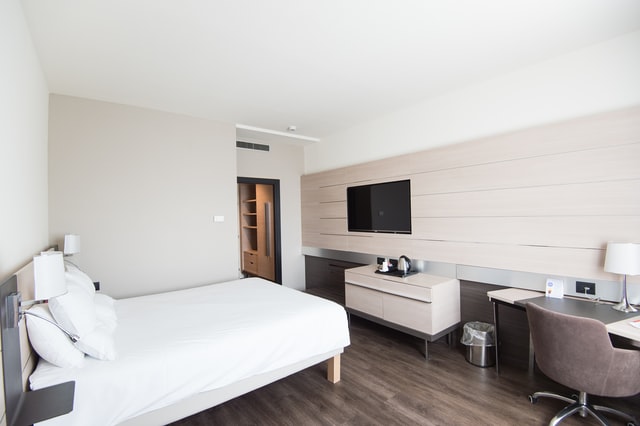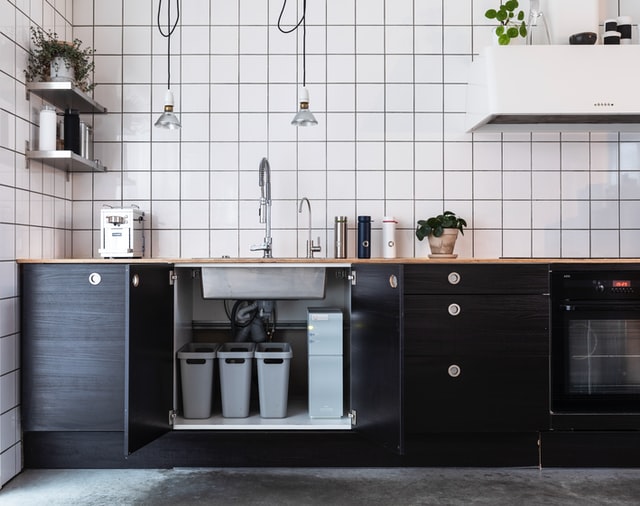10 Ways To Keep a Utility Space Stylishly Tidy
Almost every house or apartment can use a utility area. These are rooms where we keep the things we need to have close at hand and out of the way so that they don’t look cluttered and unorganized.
I think I’ve come across just about every imaginable storage solution for these types of areas in my home decorating career. I’m going to share with you some ways I’ve seen people organize their utility spaces, as well as how I go about organizing mine.
What is a “utility space”?
A utility space is basically any room [or closet] whose main function is for storing items like cleaning supplies, laundry detergents, spare light bulbs -you get the idea? You can probably find one of these in most homes.
This area will often be close to the garage, which makes sense since it’s often used when preparing for a big clean-up day or when you need to grab something quickly and don’t want to start rooting around in your cupboards or pantry.
This area is typically fairly small in size – unless you’re lucky enough to have a utility room separate from the house itself. As a result, organization can be a little more challenging. But with proper planning and creativity, your utility space can end up being one of your favorite spaces. The following are ten ways to keep a utility space stylishly tidy:
1.Find a system that works for you
If I had to pick one thing that is the most effective in getting a utility space organized, it would have to be finding a system that works for you. Generally, it’s easy enough to get rid of things – the hard part is figuring out where they’re supposed to go and how often you can realistically expect yourself to put them back (knowing your own laziness factor). Take some time with this because your storage system will probably stick with you for quite a long time (unless you decide to move house or make another significant change).
2.Make maximum use of vertical space
Utility spaces are not known as highly fashionable bits of real estate, so make sure those vertical walls are being put to good use. Shelves can be used for storing containers and baskets, often more stylish than the plastic ones you’d find at a homeware store. If you have enough ceiling height (or if you’re tall enough) it’s also worth using those vertical surfaces for hanging storage, like with this cleverly placed vintage French pissoir.
3.Label everything
Labels in the home are great overall – they improve productivity by aiding navigation and efficiency (like how word processors automatically spell check), encourage tidiness (there’s no excuse not to put things back if you can see what they belong to), and prevent stress because your brain isn’t constantly having to work out where things should go (again, assuming that you never rearrange). Label your storage containers so that there’s no question where things are going back – even if it’s just a small scrap of paper or label stuck on by a magnet.
4.Add some visual interest
Boring utility spaces make boring homes. I’m not sure why people don’t seem to realize this when designing their utility rooms, but the number of plain white walls dotted with store-bought baskets is kind of depressing. If you’re lucky enough to have an actual piece of wall space on which storage can be hung, do something interesting with it.
5.Keep the door shut
Utility spaces have a kind of “hidden” quality about them which means that things can get left in there for long periods of time, and rarely used items can stay hidden away until they become forgotten altogether. Of course, we don’t want this happening any more than anyone else, but there’s really only one way to avoid it.
6.Think vertically as well as horizontally
As I mentioned earlier, vertical space is often ignored by utility room designers when they could be using it for extra storage .
7.Keep the temperature cool and humidity low
It goes without saying that keeping your home tidy is much easier if things are clean and dry, which means avoiding dark cupboards with damp-inducing steam heating systems. The best way to keep utility rooms organized, therefore, is to create a climate-controlled environment – not too hot and not too cold – somewhere above freezing would be my recommendation. It sounds extreme, but there are lots of ways of doing this on a budget. Hanging sheets can be used as curtains, rugs scattered around the floor will help absorb moisture, and doorway thresholds added at the entrance can be adjusted to sweep the floor clean.
8.Keep boxes flat and upright
I find that Ikea’s plastic-wrapped cardboard furniture is great (and relatively cheap) for this type of job, but you could also use anything from suitcases, packing crates, ottomans, etc as well as old chests, drawers, and cupboards. Just check the measurements carefully first – think about how much room your items will take up when placed in different-sized containers. All these things are easily available from charity shops so if you’re not working to a tight budget one trip there and you could be sorted.
9.Store the heaviest things closest to the floor
This is especially important when storing boxes in an upright position as they will naturally want to tip over; a heavy box at the bottom of your stack will prevent this.
10.Remember that most people store items incorrectly when using the original packaging or cardboard boxes – don’t be afraid of getting some extra storage tubes and bags to extend what you have
You can see from this list how much choice you really have when it comes to storage. Invest in shelves or cabinets to store items that will not fit into your clothes closets or are better off hanging than folded inside of a drawer. Here you can store things like up-to-date school artwork, grandfather clocks (if they don’t run), wall decorations like lamps and picture frames, candles, small appliances such as kettle grills if you have a balcony or terrace where you can use them.


